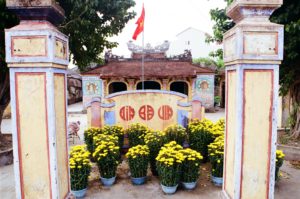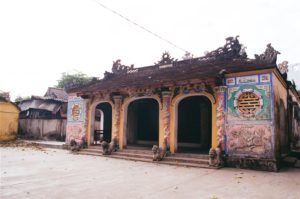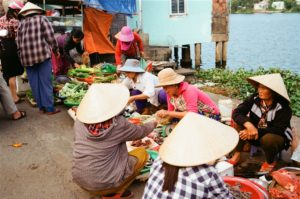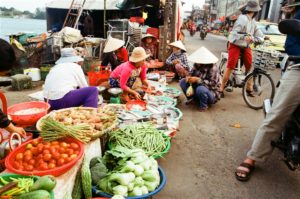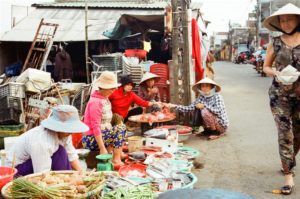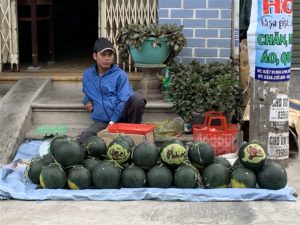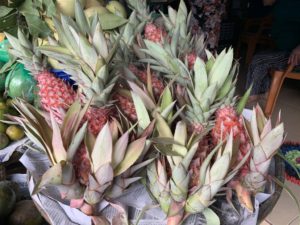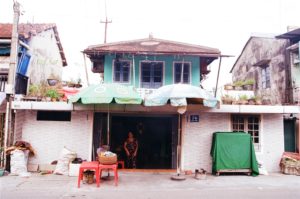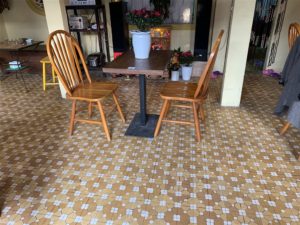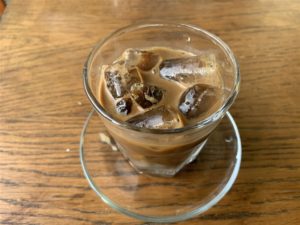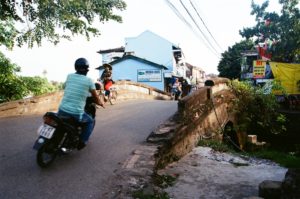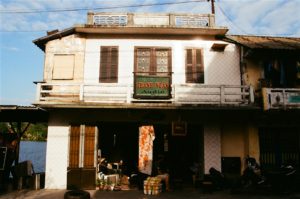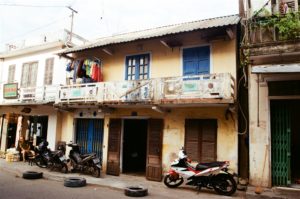Old-Time Vietnam – The Fishing Village of Bao Vinh
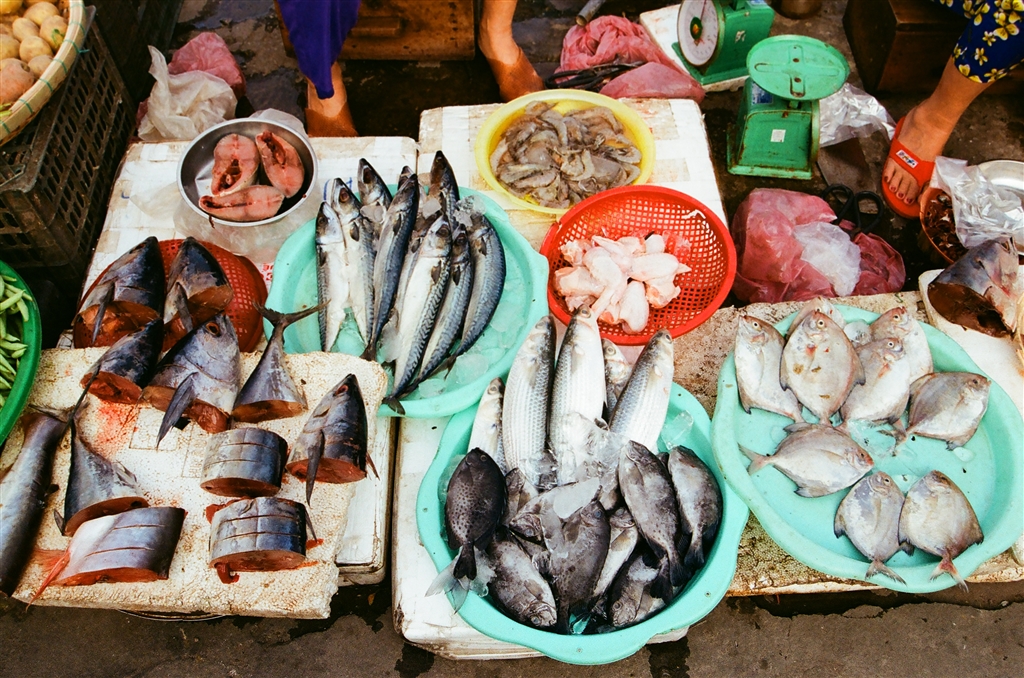
The breakfast at the Melody Hostel was something that I looked forward to every morning. The lady that cooked breakfast and managed the Hostel was Ling. She has two children. She showed me the photographs from their family vacations.
I gathered from the photographs that her family is quite well-to-do in Vietnamese terms. The things that they do remind me very much of the upper middle class in Hong Kong. Their children would learn English in schools, and the parents take them to Italian cooking classes. They love pizza’s.
As a way to raise her children with the right values, she and her husband take the children to the mountainous villages to see and experience the lives of the less-fortunate. She wants her children to grow up understanding Vietnam’s reality. Most other Vietnamese people do not lead comfortable lives as they do.
Her mother lives in Sydney, and she will be coming back to Vietnam to celebrate the Tet this year with the family.
The Fishing Village of Bao Vinh
I went to Bao Vinh because I saw a short introduction on the Lonely Planet. I was intrigued and wanted to see a fishing village in Hue. Bao Vinh lies some 5km northeast of Hue along the Perfume River.
Once upon a time, Bao Vinh was a bustling port besides having a vibrant fishing community. Its rise as a trading port originated from the Chinese merchants’ commerce in this area during the 17th century. They traded much sought-after goods: rice, salt, seafood, and fish sauce. The workmen of Bao Vinh made coffins, inlaid pearl crafts, bricks, tiles and woven handcrafts.
There were 39 century-old houses from this era of prosperity, but only about 15 remain and they are in ruins. When Hue no longer served as the capital of Vietnam, Bao Vinh’s booming commerce slowly declined. Today, there are still traditional craftsmen here, as some of the old craftsmanship has been revived, such as the making of conical hats, incense, carpentry and blacksmiths.

A Walk in Bao Vinh
When I got there, I decided that it would serve all my purposes if I just walked through the main street.
The main street that runs through this riverside community is named Bao Vinh. It was very busy. Vendors, pedestrians, bicyclists, vehicles – every bit of cacophony bespoke a vibrant community.
I passed by a banh mi stand and decided to have that as my dinner. It cost đ 15k and it was yummy.

I did not look very hard for the century-old buildings in Bao Vinh. I would rather just relax and enjoy the vibe. The colors all along its main thoroughfare came with lots of natural and man-made flavours. They were of the native fruits grown locally, of the handicrafts on sale, of the machine-made household goods. The sights were every bit aged as they were every bit youthful.
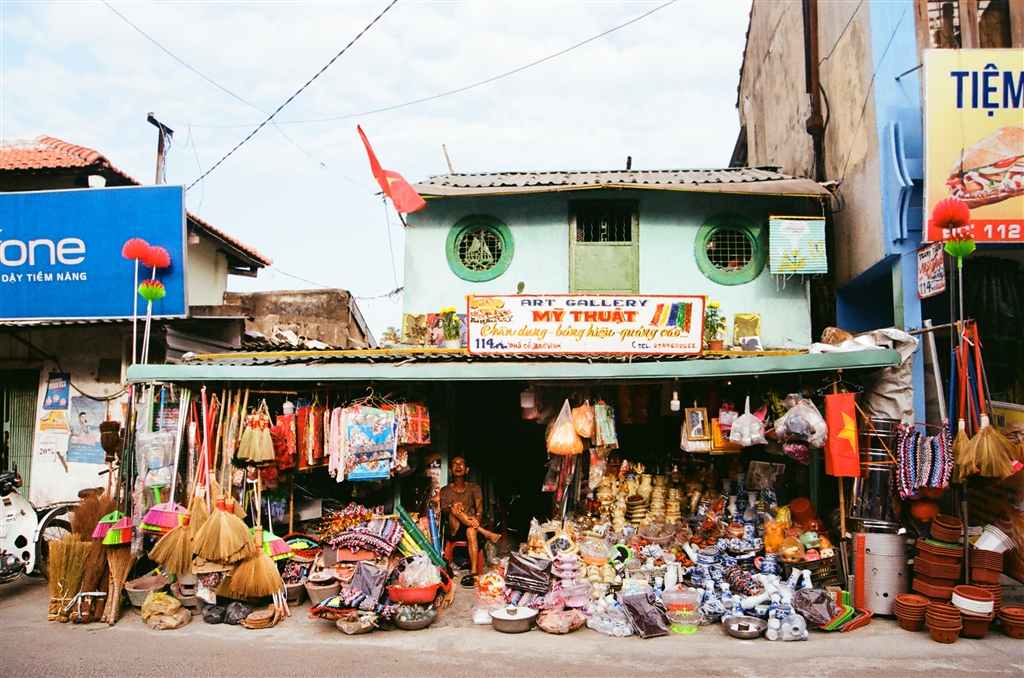
Humble structures lined the sides of the street. They were at most two storeys high, expressing fully the character of a provincial small town.
The quaint Mat Biec Café lies at the entrance into the fishing village, right by Cao Bao Vinh. I had my second cup of coffee for the day there in the late afternoon, and many others did too. It had a classy interior, with beautiful floor tiles that came from at least four decades ago. It was a popular place for the youth.
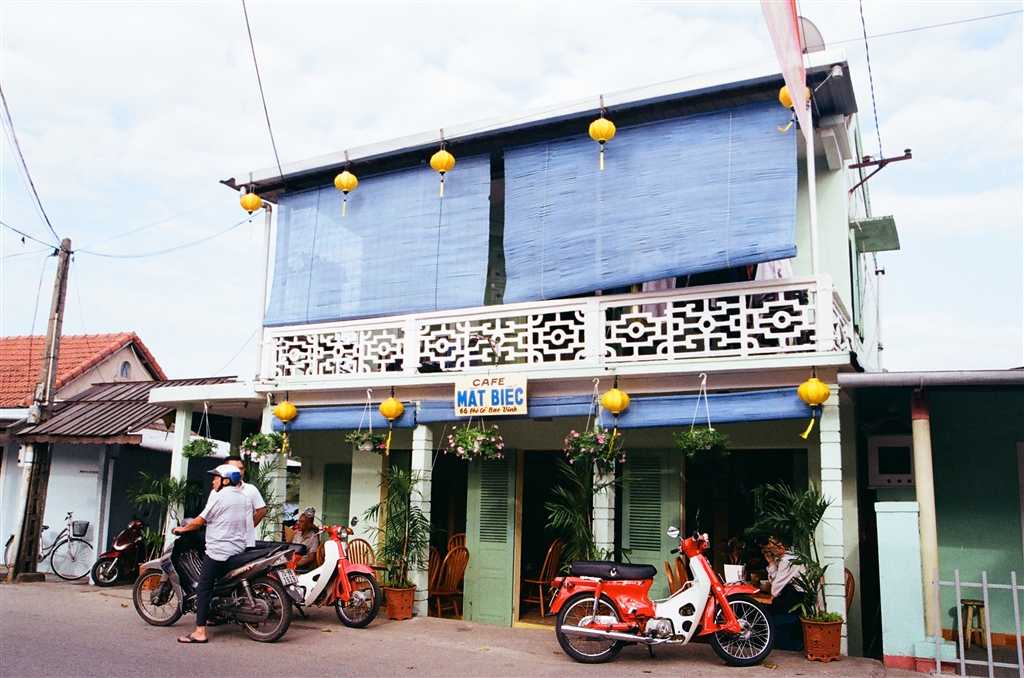
I did note that the Vietnamese men drink their strong coffee black.
I breathed in the calm views of Perfume River by its bank. There, I smelled the fragrance of time.
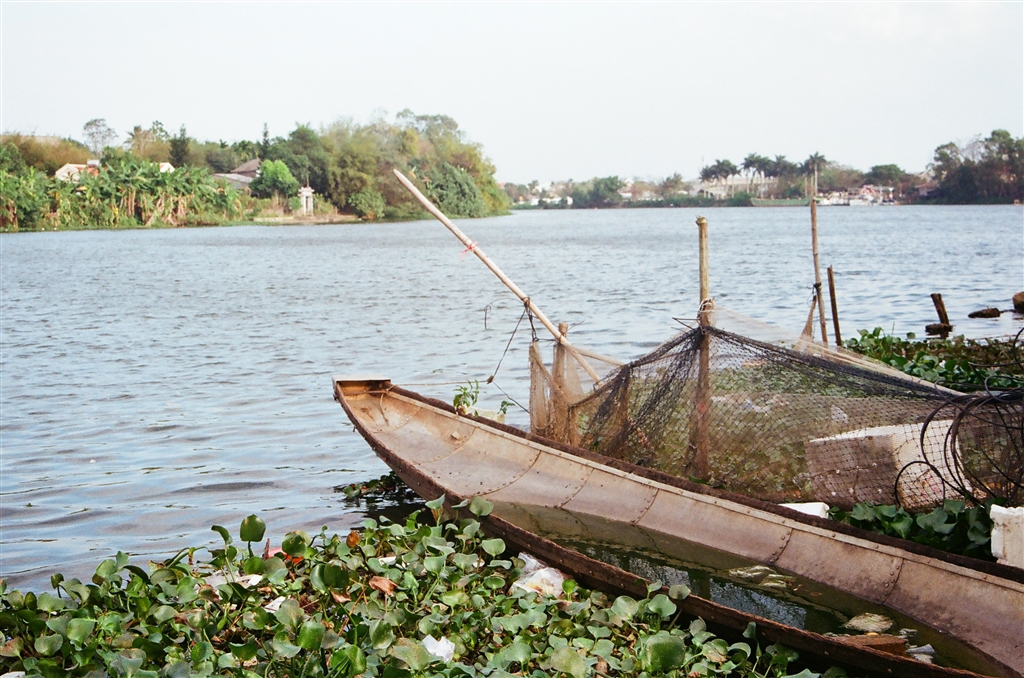
And this would be my last evening in Hue.
Sources
Bao Vinh Hue City – A Lost Ancient Town, vietnamdrive.com.

